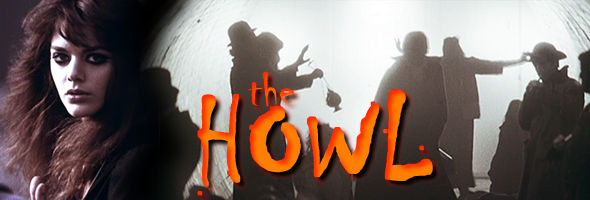
Directed by Tinto Brass / Starring Tina Aumont, Gigi Proietti, Nino Segurini
Cult Epics (US R1 NTSC) / WS (1.85:1) (16:9)

Directed by Tinto Brass / Starring Tina Aumont, Gigi Proietti, Nino Segurini
Cult Epics (US R1 NTSC) / WS (1.85:1) (16:9)
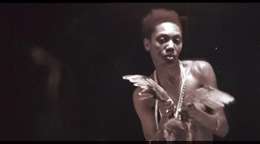 Drawing its title and a dash of inspiration from Allen Ginsberg's famous beatnik classic, The Howl (L'urlo) is easily the most
freewheeling and unjustly ignored title in the Tinto Brass canon, with plenty of the auteur's own obsessions and stylistic flourishes
congealing into an avant garde snapshot of late '60s global unrest that still resonates today. Mixing anti-war sentiments with a flurry of
rapid-fire pop culture references, atrocity footage, abundant nudity, and even oddball comedy, this oft-censored psychedelic madhouse has
never before been seen in English and will blow away anyone ready to groove along with its unique, inspirational rhythms.
Drawing its title and a dash of inspiration from Allen Ginsberg's famous beatnik classic, The Howl (L'urlo) is easily the most
freewheeling and unjustly ignored title in the Tinto Brass canon, with plenty of the auteur's own obsessions and stylistic flourishes
congealing into an avant garde snapshot of late '60s global unrest that still resonates today. Mixing anti-war sentiments with a flurry of
rapid-fire pop culture references, atrocity footage, abundant nudity, and even oddball comedy, this oft-censored psychedelic madhouse has
never before been seen in English and will blow away anyone ready to groove along with its unique, inspirational rhythms.
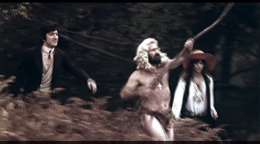 Torso's Tina Aumont stars as Anita, a lovely young woman escaping the oppression of modern-day society in a globe-hopping
travelogue that rivals anything by Alejandro Jodorowsky for sheer mind-melting strangeness. Brass himself admits there wasn't really a script per se, as the film was shot more like a voyage with a vague framework for the actors; thus it's a real "trip" in the truest movie sense, grabbing the viewer by the throat from the opening frames and never letting up for an hour and a half. Basically Aumont is about to marry her conformist fiance (Segurini) in a bizarre outdoor ceremony, only to take off to escape to a new life. Our runaway bride finds a traveling companion in Coso (Proietti), a Chaplinesque figure whose smile instigating her rebellion and who accompanies her through picaresque adventures edited like a music video as they tangle with naked hippies, a sex club hotel, bourgeois cannibals, overly enthusiastic soldiers, and other things you don't exactly see every day.
Torso's Tina Aumont stars as Anita, a lovely young woman escaping the oppression of modern-day society in a globe-hopping
travelogue that rivals anything by Alejandro Jodorowsky for sheer mind-melting strangeness. Brass himself admits there wasn't really a script per se, as the film was shot more like a voyage with a vague framework for the actors; thus it's a real "trip" in the truest movie sense, grabbing the viewer by the throat from the opening frames and never letting up for an hour and a half. Basically Aumont is about to marry her conformist fiance (Segurini) in a bizarre outdoor ceremony, only to take off to escape to a new life. Our runaway bride finds a traveling companion in Coso (Proietti), a Chaplinesque figure whose smile instigating her rebellion and who accompanies her through picaresque adventures edited like a music video as they tangle with naked hippies, a sex club hotel, bourgeois cannibals, overly enthusiastic soldiers, and other things you don't exactly see every day.
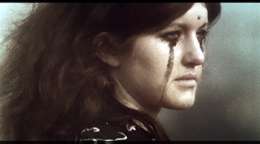 Exactly why El Topo took off as a midnight hit while this languished in obscurity after a few sparse Italian playdates is anyone's guess, but Brass' subsequent career has justifiably spurred interest in his back catalog before he turned to cheeky erotica. The Howl essentially completes a loose trilogy of nearly plotless, avant garde cinematic firebombs along with Deadly Sweet and Attraction, finishing the cycle on a most extreme, dizzying note. Aumont was already a blossoming starlet with films like Fellini's Satyricon and Vadim's The Game Is Over under her belt, but she really carries her starring role here incredibly well even when the film makes no sense at all on a rational level. Extraondinarly beautiful and captivating to behold, she only had a middling career later in the '70s (Salon Kitty, Torso and Fellini's Casanova being the high points) but really shone when given the chance. Meanwhile Brass piles on every cinematic technique in the book, utilizing rapid-fire editing to work in dream sequences, alternating B&W and color footage, and undercranked slapstick scenes, while semi-regular Brass composer Fiorenzo Carpi accentuates the visuals with an equally wild experimental score. His regular cinematographer, Silvano Ippoliti, also delivers in the visual department, particularly with two memorable sequences involving burning vehicles. You've definitely never seen anything like it.
Exactly why El Topo took off as a midnight hit while this languished in obscurity after a few sparse Italian playdates is anyone's guess, but Brass' subsequent career has justifiably spurred interest in his back catalog before he turned to cheeky erotica. The Howl essentially completes a loose trilogy of nearly plotless, avant garde cinematic firebombs along with Deadly Sweet and Attraction, finishing the cycle on a most extreme, dizzying note. Aumont was already a blossoming starlet with films like Fellini's Satyricon and Vadim's The Game Is Over under her belt, but she really carries her starring role here incredibly well even when the film makes no sense at all on a rational level. Extraondinarly beautiful and captivating to behold, she only had a middling career later in the '70s (Salon Kitty, Torso and Fellini's Casanova being the high points) but really shone when given the chance. Meanwhile Brass piles on every cinematic technique in the book, utilizing rapid-fire editing to work in dream sequences, alternating B&W and color footage, and undercranked slapstick scenes, while semi-regular Brass composer Fiorenzo Carpi accentuates the visuals with an equally wild experimental score. His regular cinematographer, Silvano Ippoliti, also delivers in the visual department, particularly with two memorable sequences involving burning vehicles. You've definitely never seen anything like it.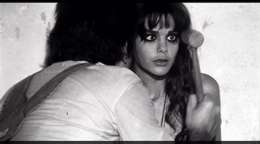
Finding a decent English-friendly version of The Howl has been impossible for decades, with even gray market devotees only turning up awful, dupey copies from VHS. It's important to keep its extreme rarity in mind when evaluating Cult Epics' release, which comes from an uncut transfer of a somewhat faded, splicey print reportedly held by Brass himself. The rights history to the film left it essentially an orphan for decades, without usable film elements around to do a proper transfer. The presentation here is definitely better than anything we've had before by a long shot, but don't expect fireworks. The 1.85:1 framing appears to be correct, and all of the sometimes volatile imagery is intact (including nudity that really pushes the envelope way beyond what was accepted in 1970). As with Deadly Sweet, Brass contributes a commentary track that doesn't even really try to offer any sort of linear explanation for the film; instead he mainly focuses on its unorthodox shooting methods, the techniques used to recruit the actors and get them in the right spirit, and his feelings about this extremely fertile period in his career. His accent's still very thick, so prepare to do a bit of rewinding to figure out a few of his observations. Also included are trailers for Deadly Sweet and the forthcoming Attraction (originally Nerosubianco, here under its wildly inappropriate reissue title, The Artful Penetration of Barbara). Easily a must-purchase for anyone who wants to see just how far out Italian cinema could really go at its creative pinnacle.
![]()